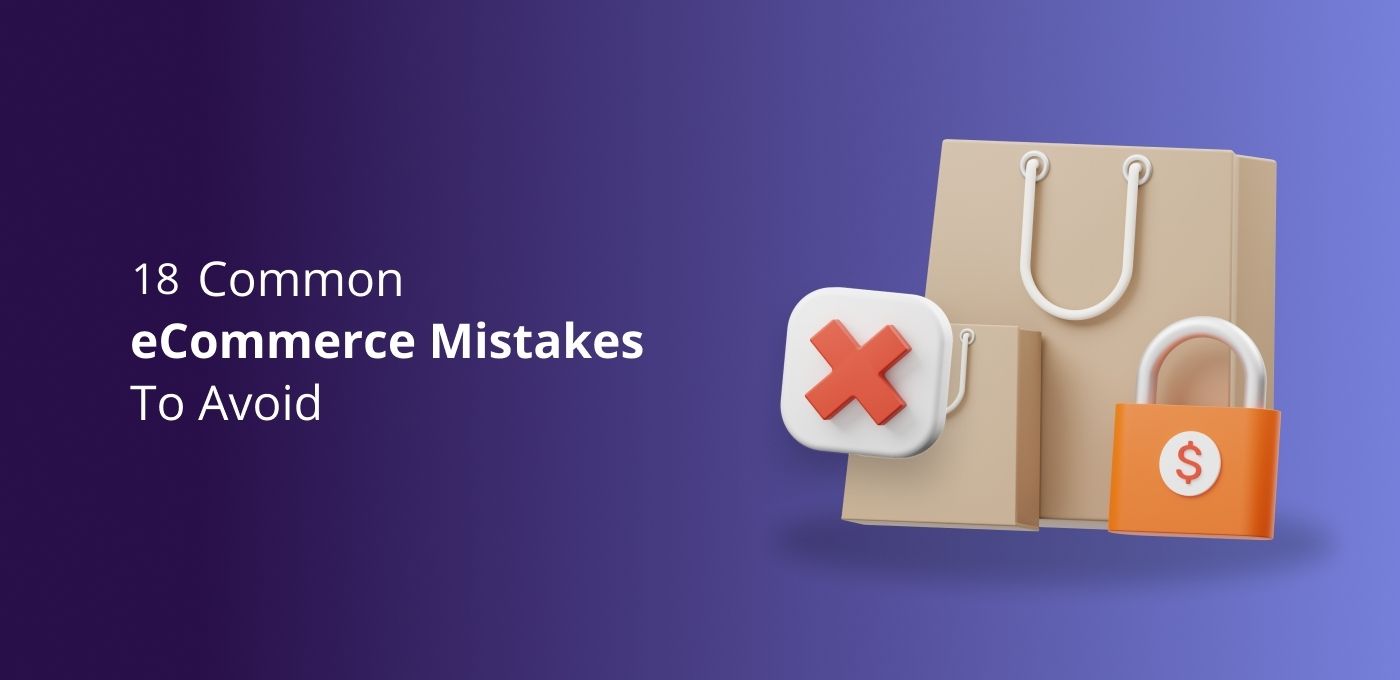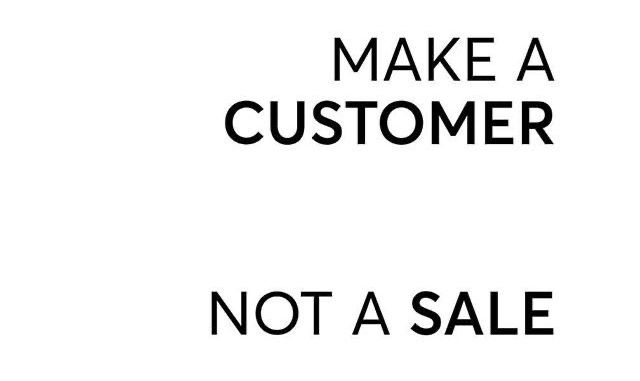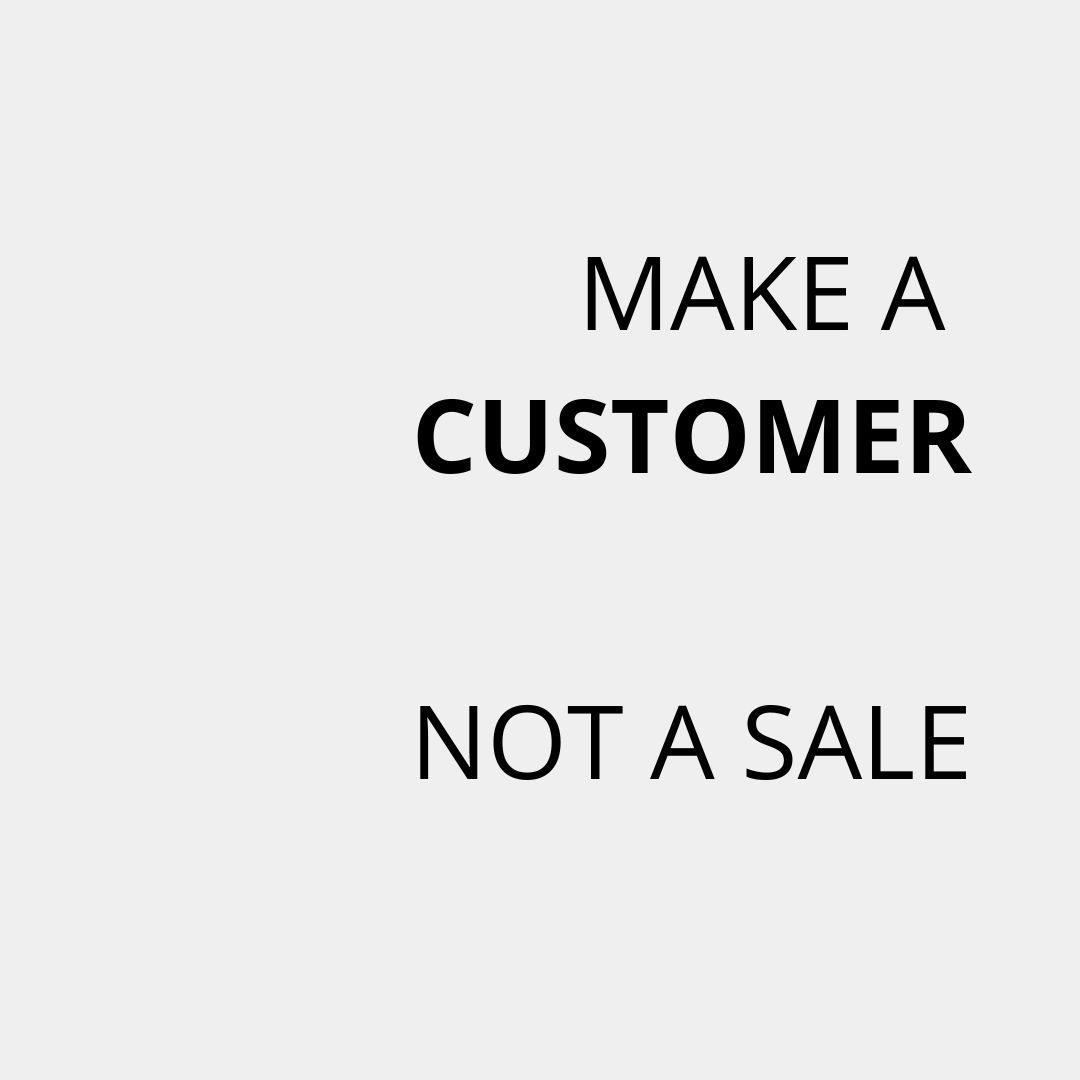Looking to enhance your e-commerce store and provide a top-notch experience for your customers? You're in the right spot.
In the e-commerce world, it's not just about having a store; it's about making it work effectively for your audience. While setting up a shop is straightforward, ensuring it stands out and delivers is where the challenge lies. According to a study by Baymard Institute, the average cart abandonment rate is nearly 70%. This means that 7 out of 10 shoppers leave without making a purchase.

Common E-commerce Missteps
There's a difference between "having an online store" and "having an effective online store." As store owners, we should aim for the latter, and I'm here to guide you.
But first, why is it crucial to sidestep these pitfalls? With so many options available, customers won't hesitate to switch if they face any inconvenience. A smooth experience is essential. And remember, a single negative experience might lead to unfavorable reviews, potentially steering away future customers. In fact, BrightLocal's survey found that 82% of consumers read online reviews for local businesses.
The goal? Create a seamless shopping journey, from clear product images to a user-friendly website design.
We've broken down the 18 e-commerce mistakes into four categories:
- Not Knowing Your Product or Audience Well.
- Selecting the Wrong Tech Tools.
- Issues with Product Listings.
- Not Delivering a Solid User Experience.
Ready to dive in? Let's go.
Understood. Let's maintain more of the original content while still adapting it to the tone of the m-commerce article:
E-commerce Mistake #1: Misunderstanding Your Product and Audience
While the idea "If you build it, they will come" might sound poetic, it's not the most strategic approach in the e-commerce world.
Truly understanding your product and audience is the cornerstone of success. Without this foundation, you're essentially navigating without a map, hoping your product resonates with potential customers. If there's a mismatch, not only are sales at stake, but you're also investing time and resources into a potentially unfruitful venture.
The solution? Dive deep into market needs. By discerning what your audience is genuinely looking for and identifying gaps in current market offerings, you can tailor your products to truly resonate with them, leading to a potential influx of eager customers.
➡️ Overlooking Market Research
As Ramit Sethi, a well-regarded personal finance author, aptly puts it: it's essential to "visit the fishing holes." Analogous to how fishermen scout for the best spots teeming with fish, e-commerce entrepreneurs should be on the lookout for rich market insights.
Platforms like Google, Facebook groups, YouTube, and even competitor reviews can be invaluable. Regularly tapping into these insights can not only refine your approach but also significantly boost your conversion rates.
➡️ Not Clearly Defining Your Target Audience
Attempting to sell a product to an audience that doesn't resonate with it is akin to offering a staircase to someone living in a single-story apartment. It's essential to remember that a significant portion of consumers feels that brands often miss the mark in understanding their needs, leading to irrelevant content.
Start by pinpointing the specific challenges your product addresses. As you gather more insights, craft detailed buyer personas. This approach will not only refine your marketing strategies but also ensure you're reaching the right audience.
➡️ Setting Prices Without Adequate Research
After understanding your audience and their needs, the next pivotal step is pricing. However, a common pitfall in e-commerce is setting prices without thorough research. While it might seem logical to follow competitor pricing, if your product offers a unique value proposition, it might command a higher price point.
It's essential to understand what your audience values—whether it's convenience, ethical sourcing, or premium quality—and price your products accordingly.
For instance, the messaging on the Di Bruno Bros website is crafted to exude a sense of luxury, emphasizing its value and rich heritage.
Ecommerce Mistake #2: Improper Tech Stack
Starting an ecommerce store is relatively straightforward, but this ease of entry can be misleading. While it's tempting to dive in with minimal costs, the technology behind your store plays a pivotal role. The right tech infrastructure impacts everything from user experience and security to customer loyalty.
Making informed decisions early on can spare you the hassle and potential pitfalls that others face when they realize they've outgrown their initial choices.
➡️ Settling for a Mismatched Ecommerce Platform
Ecommerce platforms are not one-size-fits-all. While some might offer basic functionalities with limited scalability, others might lure you in with attractive initial offers, only to hit you with unforeseen costs later. It's essential to find a platform that aligns with your business's trajectory. For instance, you might start with a B2C model and later venture into B2B. Before committing, do your homework.
Engage with other store owners, scour online forums for insights, and ensure your chosen platform can adapt as your business evolves. For a deeper dive into selecting the ideal platform tailored to your business needs, we invite you to explore our comprehensive guide on how to choose the right e-commerce platform.
➡️ Overlooking Security Measures
While budgeting is crucial, especially for newcomers, security isn't an area to skimp on. The digital landscape is rife with threats, from financial fraud to phishing attempts. It's not about if, but when your store might be targeted. To fortify your defenses, invest in essentials like SSL certificates for payment protection, antivirus software, and transition to HTTPS for overall data security. For instance, the padlock symbol on Skullcandy’s website indicates a secure HTTPS connection.
➡️ Venturing into DIY Ecommerce CMS
Crafting a bespoke content management system (CMS) might seem enticing, but it often leads to unforeseen challenges. Issues can range from the initial setup complexities to potential security vulnerabilities and the steep learning curve for your team.
If you're contemplating a custom CMS, think twice. If you're already entangled in a problematic custom system, it might be time to transition to a tried-and-tested CMS solution.
Ecommerce Mistake #3: Product Page Pitfalls
Your product pages are the linchpin of your ecommerce site. A subpar product page can deter potential customers, no matter how great your product is. Here's a breakdown of common pitfalls and how to sidestep them:

➡️ Overlooking Social Proof
Social proof acts as a testament to your product's quality and desirability. A staggering 76% of shoppers are hesitant to buy from a site without reviews. Take a cue from Burrow, which effectively leverages its 699 five-star reviews to instill trust.
To garner more reviews, simplify the process for your customers. Incorporate review prompts in your email sequences, packaging, or even a post-purchase thank-you page.
➡️ Inadequate Product Imagery
Your product photos should be enticing and informative. While a substandard photo can diminish a product's appeal, a well-crafted image can elevate it. Burrow's imagery, for instance, offers a comprehensive view of their loveseat, complete with dimensions. Meanwhile, Skullcandy and Reverly employ backgrounds that accentuate their products without overshadowing them.
The key is to highlight the product effectively, using complementary backgrounds.
➡️ Uninspiring Product Descriptions
While images capture attention, product descriptions seal the deal. They should be persuasive and informative. Burrow's descriptions, for example, are concise yet comprehensive, enhanced with visually appealing icons.
Solo Stove's headline immediately conveys its USP: a smokeless, popular stove. The subsequent description addresses a common fire pit issue and offers a solution. When crafting your descriptions, pinpoint the product's unique value proposition and convey it clearly.
➡️ Cluttered Media Mix
While your site's main objective is to drive sales, bombarding visitors with excessive media can be counterproductive. A harmonious blend of images and videos can enhance the user experience, but overloading can deter potential customers.
If your site lags or overwhelms visitors, it's not serving its purpose. Prioritize a seamless user experience in every aspect of your site design, which segues into the next potential pitfall...
Ecommerce Mistake #4: Prioritizing User Experience
User experience is paramount. The design and functionality of your website not only influence conversion rates but also play a role in search engine rankings. Here's a breakdown of common pitfalls online stores face and strategies to navigate them.

➡️ Absence of Clear Categories
Directing potential customers to their desired products is essential. Categories guide visitors, potentially nudging them towards other items, boosting sales. If they're forced to sift through unrelated products, they might leave. For instance, Natori has a streamlined menu that further breaks down into sub-menus, facilitating product discovery.
➡️ Limited Service Details or Contact Info
Beyond the product, consumers seek information on shipping, returns, and contact avenues. Omitting these details can deter potential customers. Solo Stove, for instance, clearly states its shipping and return policies, emphasizing customer-centricity.
➡️ Complex Navigation
A site's navigation should be intuitive. Solo Stove's menu bar is a testament to this, offering clear product categories and essential links. The footer further provides comprehensive information, ensuring visitors have all they need.
➡️ No Option for Guest Checkout
Mandatory account creation can deter potential buyers. While capturing customer data is beneficial for future marketing, the checkout process should prioritize simplicity. With cart abandonment rates soaring, streamlining the checkout process is crucial. If account creation is a must, simplify it with one-click options like social or Gmail sign-ins.
➡️ Echoing Competitor Content
Differentiation is key. If your content mirrors competitors', why should customers choose you? Drawing inspiration is fine, but carving a unique niche is essential. Armed with market research, crafting distinctive content becomes straightforward.
➡️ Overlooking Analytics in Marketing
Marrying creativity with data is the essence of effective marketing. Personalized emails, influenced by consumer behavior, have significantly higher conversion rates. Leveraging analytics can provide insights into traffic sources, popular products, and more, refining marketing strategies.
➡️ Limited Payment Gateways
In today's fast-paced world, convenience is paramount. Not offering a customer's preferred payment method can be a deal-breaker. Most CMS platforms support multiple payment options, emphasizing the pitfalls of custom-built CMS.
➡️ Restricted Shipping Choices
Customers prioritize three things: the product, fair pricing, and efficient shipping. With free shipping becoming a norm and many consumers feeling their shipping needs aren't met, offering diverse shipping options can set your store apart.
In Conclusion
The essence of these challenges is the need to prioritize the customer. From diverse payment and shipping options to intuitive site navigation and unique content, every decision should cater to the customer's convenience. By consistently placing the customer at the forefront, you're poised to offer a shopping experience that ensures repeat visits. For more insights and tips, explore our ecommerce blog.





